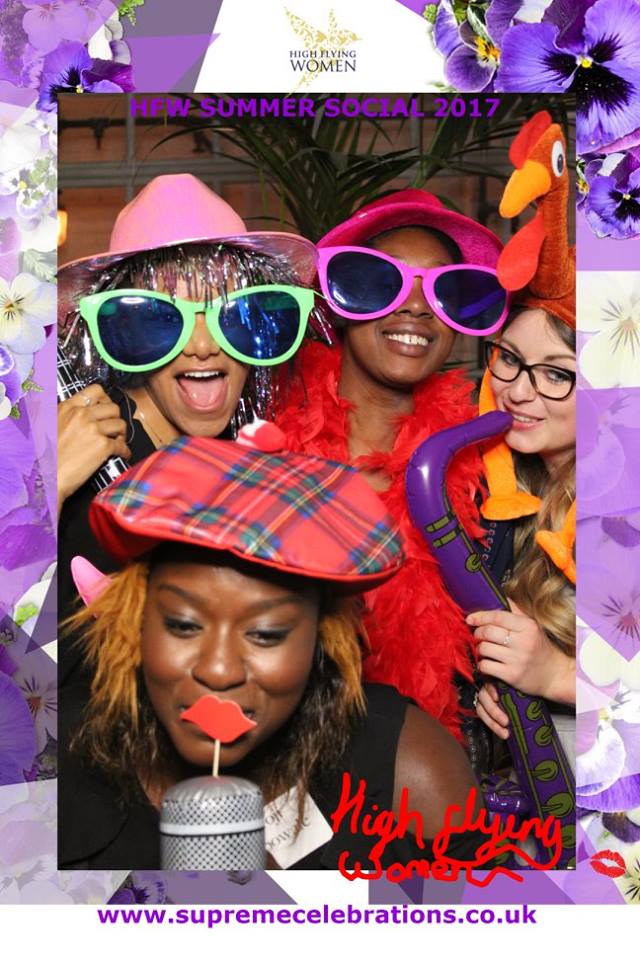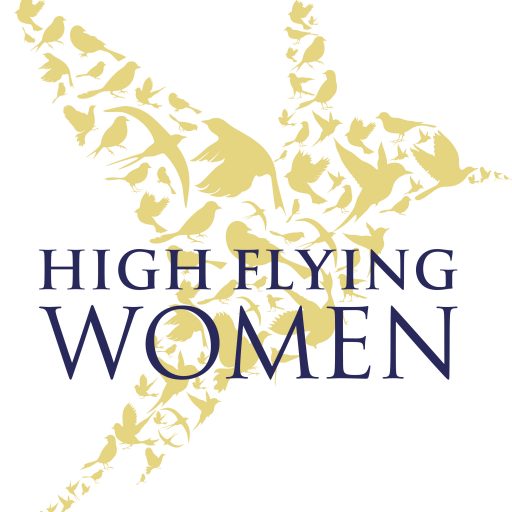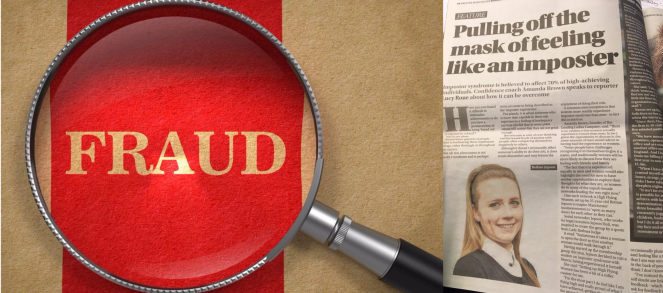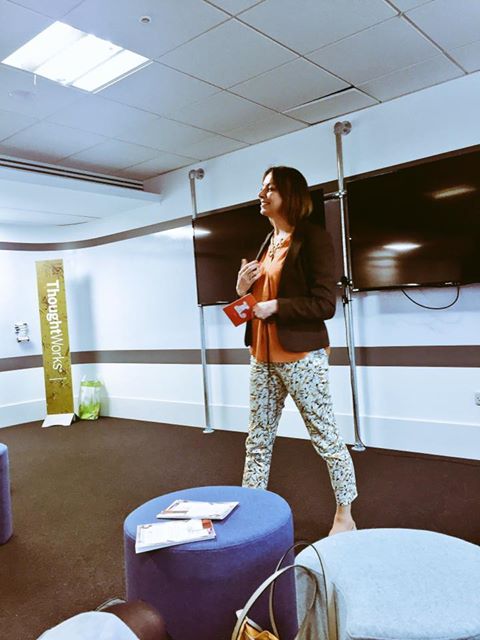We had a great time at the summer social, it was so lovely to be able to catch up and meet new members too.
I hope that you enjoyed the evening, we definitely enjoyed being at The Botanist and getting our hair done, posing in the Magic Mirror and having a good ole hand massage.
If you want to get in touch with any of our collaborators from the event see our new page (ooh fancy) on the website – Business Collaborations. If your business would like to feature on it, of course, please do get in touch – we would love to have sponsors for our events.
It’s so encouraging to see that High Flying Women just keeps growing, with every event showing new faces and new stories to hear. I thoroughly enjoyed chatting with some of our new members and hearing about how they got to the places they are now. Hearing the different paths that women take into their careers is really encouraging; there are those that launched their career straight away, and others choosing to enter into it later on after being stay at home mums. The great thing about the network is that we get to meet other women who do things in different ways – it’s a beautiful thing.
Hearing each other’s stories and how we get to where we are in life is so important. It helps you to understand a person and why they act or think a certain way, allows you to connect with them on a deeper level, learn different ways of doing things (and challenge you in that) and encourages us when you hear the trials that people have overcome, as well as being able to share in some of the difficulties.
On that note, a friend of mine (who I look up to in her passion for Equality) has recently started posting about Women who Pioneer on her social media, and I am loving it.
Hannah wanted to challenge herself and anyone else to educate themselves better on influential and inspirational women who we should aspire to be like more.
Hannah’s challenge to herself was this:
‘Which women do I look up to / aspire to be like? Not sure. Which women in history jump out at me? Not many. History was written by men, and women were written out. Now I’ve even written them out myself. Fortunately, I’ve found lots of strong women in my own life who inspire me and challenge me and make me proud to be a gal. But beyond that circle, I’m just not sure who I’m looking to.
My challenge to myself (and to you, perhaps) is to find the women and put them back where they belong: throughout history and influencing culture. l’ve kinda made it my aim to try and champion them and elevate them (and that includes the gals in my life!!). What do you think? Who should I learn about?’
So I thought why not share Hannah’s instagram captions – check it out yourself here @hannahkmilne – and the women she has been raving about with you.
Women who Pioneer
First up, it’s got to be of course:
1. Rosa Parkes – ‘The Mother of the modern day civil rights movement’
‘ Her refusal to surrender her seat to a white male passenger on a Montgomery, AL, bus on December 1955, triggered a wave of protest and bus boycotts that reverberated through the United States. A year later, the US Supreme Court ruled that bus segregation was unconstitutional.
”Rosa Parks sat down because she had reached a point where it was essential to embrace her true vocation – not as someone who would reshape our society but as someone who would live out her full self in the work. She decided, “I will no longer act on the outside in a way that contradicts the the truth that I hold deeply on the inside. I will no longer act as if I were less than the whole person I know myself inwardly to be.” – Parker Palmer ‘
2. Octavia Hill – Co-Founder of The National Trust
‘ This woman is lesser known, but a pioneer nonetheless. She’s not only of great trivial importance (I’m sure she’ll be the answer to an obscure pub quiz question at some point) but she is also a woman after my own heart when it comes to the great outdoors.
Octavia Hill co-founded the National Trust in 1895, with the vision to get people in the city out to the country. She was compelled by the belief that good environments make better people. In addition to founding the Trust, she was one of the greatest social entrepreneurs in British history.
‘There are indeed many good things in life which may be unequally apportioned and no such serious loss arise; but the need of quiet, the need of air, and I believe the sight of the sky and of things growing, seem human needs, common to all men.’ ‘
3. Mary Seacole – Nurse and Heroine of the Crimean War
‘ Seacole was a pioneering nurse and heroine of the Crimean War, who as a woman of mixed race overcame a double prejudice.
In 1854, Seacole travelled to England, and approached the War Office, asking to be sent as an army nurse to the Crimea where there was known to be poor medical facilities for wounded soldiers. She was refused. Was it possible, she asked herself, ‘that American prejudices against colour had taken root here? Did these ladies shrink from accepting my aid because my blood flowed beneath a somewhat duskier skin than theirs?’. In her disappointment, Mary cried in the street.
Seacole funded her own trip to the Crimea where she established the British Hotel near Balaclava to provide ‘a mess-table and comfortable quarters for sick and convalescent officers’. She also visited the battlefield, sometimes under fire, to nurse the wounded, and became known as ‘Mother Seacole’. Her reputation rivalled that of Florence Nightingale. She was posthumously awarded the Jamaican Order of Merit in 1991. In 2004 she was voted the greatest black Briton.’
4. Alice Guy-Blanche – First Female Filmmaker
‘ Alice Guy Blaché, the world’s first female filmmaker, was one of the key figures in the development of narrative film. She was one of the first to shoot on location and to sync picture and sound; and she pioneered essential techniques including double exposure and fade-outs. Whilst pregnant with her second child, she was the first – and so far the only – woman to own and run her own studio plant (The Solax Studio in Fort Lee, NJ, 1910-1914).
From 1896 to 1920 she directed hundreds of short films (including over 100 synchronised sound films and twenty-two feature films), and produced hundreds more. She promoted strong female leads and a couple of her films had strong feminist themes, including her 1906 comedy, ‘The Consequences of Feminism’, which showed the traditional gender roles reversed.
“There is nothing connected with the staging of a motion picture that a woman cannot do as easily as a man, and there is no reason why she cannot completely master every technicality of the art.” ‘
5. Chimanda Ngozi Adichie – Nigerian Writer
Chimanda is a Nigerian writer, who writes short stories, novels and non-fiction. Her short book ‘We should all be feminists’ has some pretty good quotes in it. Here’s the ones Hannah picked out, aftering reading the whole book out loud to her husband in a coffee shop (#empowered #preachit).
“I have chosen to no longer be apologetic for my femaleness and my femininity. And I want to be respected in all of my femaleness because I deserve to be.”
“The problem with gender is that it prescribes how we should be rather than recognizing how we are. Imagine how much happier we would be, how much freer to be our true individual selves, if we didn’t have the weight of gender expectations.”
“Some people ask: “Why the word feminist? Why not just say you are a believer in human rights, or something like that?” Because that would be dishonest. Feminism is, of course, part of human rights in general—but to choose to use the vague expression human rights is to deny the specific and particular problem of gender. It would be a way of pretending that it was not women who have, for centuries, been excluded. It would be a way of denying that the problem of gender targets women.”
6. Billy Jean King – Tennis Player
‘ ‘In 1973, Bobby Riggs, once number one male tennis player, took on Margaret Court, the number one women’s player at the time. He beat her in straight sets, 6-2, 6-1, in what later became known as the Mother’s Day Massacre. The second-wave of the feminist movement was brewing in the US, and the public defeat gave chauvinists the fodder to ridicule women.
Billy Jean King began playing tennis at eleven, and by seventeen she was playing internationally. When rejected from a professional tennis organisation comprised of male players, King and eight other female players started a women’s tour, despite being told by the US Lawn Tennis Association that they would be suspended from other competitions, including Wimbledon and the US Open. The tour was a success and women continued playing professionally and formed their own professional body, the Women’s Tennis Association.
In the early 1970s, King campaigned for the legislation that would become Title IX, which outlawed sexual discrimination in the provision of federal assistance for educational programmes – meaning women athletes in the US began receiving college scholarships alongside their male peers. This saw a 662 per cent increase i the number of female college athletes.
Then in 1973 came the Battle of the Sexes. Bobby Riggs and Billy Jean King played in front of a worldwide TV audience of 100 million. After a faltering start, King beat Riggs in straight sets, 6-4, 6-3, 6-3 and went down in sporting history as one of the most significant athletes of the century. ‘
7. Junko Tabei – First woman to reach the summit of Mount Everest
‘ ‘In 1975, Junko Tabei became the first woman to reach the summit of Mount Everest. In doing so, she defied all those who had suggested that women and weakness were synonymous, and the biological determinism used to bar women from public life.
Born in 1939 in a small town in northern Japan, Tabei climbed her first two peaks aged ten. She joined a number of climbing clubs in the early 1960s, but was met with opposition from men who refused to climb with her. In 1969, she set up Japan’s first climbing club from women. The group of fifteen women, including a teacher, a computer programmer and a youth counsellor took on Everest in 1975, much to the disdain of many companies who refused to sponsor the women, as it ‘is impossible for women to climb Everest.’
As they began their attempt, the newspapers mocked them, using pictures of the women applying lip balm, saying ‘even in the mountain, they don’t skip the make up.’ However, after avalanches and perilous ridges, at 12.35pm on 16 May 1975, Tabei reached the summit.
‘When I reached the summit, rather than simply feeling the joy of conquering the mountain, I felt that at last I did not have to take another single step.’ ‘
8. Valentina Tereshkova – Cosmonaut
‘ ‘On 12 April 1961, Yuri Gagarin became the first person to journey into outer space. Tereshkova, a worker in a textile factory, gathered around the radio with colleagues to listen to this historic moment. She later spoke of that moment, saying, ‘I started to feel some nervousness, some shy thoughts… and then I decided. I’ll be an astronaut.’ Soon after, she wrote to the Soviet authorities, volunteering to go into space.
The odds were stacked against her. The first astronauts in the Soviet Union and the US were members of the military, Tereshkova was a civilian. Perhaps most obviously, she was a woman. There were genuine questions as to whether a woman’s body and mind could withstand space. However, with so much at stake in the space race, Lieutenant General Kamarin wrote in his journal, ‘under no circumstances should an American become the first woman in space – this would be an insult of Soviet women.’
In June 1963, aged just 26 years old, Tereshkova became the first woman in outer space. She spent two days, 22 hours and 50 minutes in space – more time than all US astronauts put together. She also achieved the other essential aim of her mission: to prove women could survive in space.
‘In entrusting a 26 year old girl with a cosmonaut mission, the Soviet Union has given its women unmistakable proof that it believes them to possess [prestige and honour]. The flight of Valentina Tereshkova is, consequently, symbolic of the emancipation of the Communist woman. It symbolises to Russian women that they actively share (not passively bask, like American women) in the glory of conquering space.’ – Clare Booth Luce, Life magazine. ‘
And of course
9. Sheryl Sandberg – COO of Facebook
‘ Sheryl Sandberg is the chief operating officer at Facebook and an incredible leader. In this book, she examines why women’s progress in achieving leadership roles has stalled, explains the root causes, and offers solutions that can empower women to achieve their full potential. It’s immensely challenging as a woman and as a leader and as an ally in the workplace. How are my deeply rooted subconscious biases about gender and my own potential limiting others? I’d love to share some stats that shocked and challenged me. I’m curious as to how they make you feel? If these things aggravate you in some way or make you uncomfortable, sit with it for a bit and examine why.
‘Knowing things could be worse should not stop us from trying to make them better. The blunt truth is that men still run the world. This means when it comes to making the decisions that most affect us all women’s voices are not heard equal. Of the 195 independent countries in the world, only 17 are led by women. A meagre 5 perfect of the S&P 500 CEOs are women. In the UK, women hold only 21 percent of senior executive positions.’
‘A 2011 McKinsey report noted that men are promoted based on potential, while women are promoted based on achievement.’
‘An internal report at Hewlett-Packard revealed that women only apply for open jobs if they think they meet 100 percent of the criteria listed. Men apply if they think they met 60 percent.’
‘Millennial women are less likely than their male peers to characterise themselves as “leaders”, “visionaries”, “self-confident”, and “willing to take risks.” ‘
So, there’s just a few women who we can learn from and be inspired by and I hope that it encourages you. I love Hannah’s desire to challenge herself, and learn from other women.
I guess that’s what High Flying Women is trying to do – to be able to inspire, encourage and learn from each other, and see change. It’s great to be able to be a part of something that allows us to surround ourselves with so many wonderful women who each have a story of their own.
To see who’s next on the list and keep updated on the women Hannah finds follow her Instagram here: @Hannahkmilne or search her Instagram hashtag #WomenWhoPioneer
I love it and hope you do too.
Have a great week.
Olivia xo

 How do you know when you have a good work life balance? Is it about time or is it about happiness and wellbeing? Can you have one without the other?
How do you know when you have a good work life balance? Is it about time or is it about happiness and wellbeing? Can you have one without the other?



 The manifesto written by an anonymous Google software engineer gives us a real insight into the culture of silicon valley.
The manifesto written by an anonymous Google software engineer gives us a real insight into the culture of silicon valley.




